As the challenges facing our communities become more complex—rising infrastructure costs, environmental pressures, and demand for livable spaces—our land development strategies must evolve. Sustainable land development integrates green infrastructure planning and resilient community design to create neighborhoods that not only meet today’s needs but are built to thrive both now and in the future.
Forward-thinking land planning, engineering, and landscape design strategies—such as shared green space, stormwater infiltration, diverse housing types, and walkable infrastructure—play a critical role in supporting green, sustainable, and resilient development.
Understanding the Framework: Green, Sustainable, and Resilient Development
These terms are often used interchangeably, but each represents a unique role:
- Green development focuses on reducing environmental impact. This includes energy-efficient infrastructure, native landscaping, and water conservation practices that support natural systems.
- Sustainable development takes a broader view. It balances environmental, social, and economic goals to promote project-related decisions that support future generations.
- Resilient development emphasizes durability and adaptability. It equips communities to withstand and recover from challenges like extreme weather, infrastructure disruptions, and economic shifts.
Together, these approaches form a comprehensive framework for responsible growth planning solutions that prioritize community well-being, environmental stewardship, and economic viability.
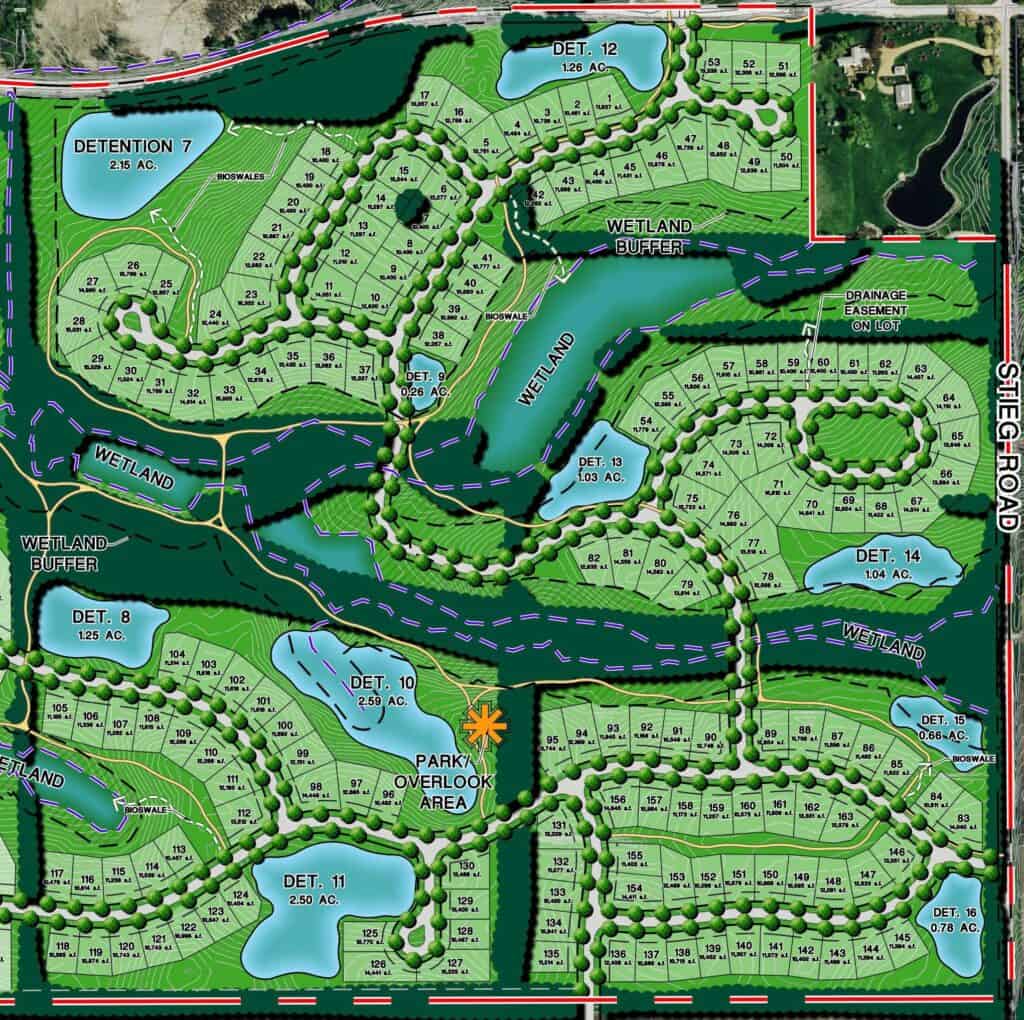
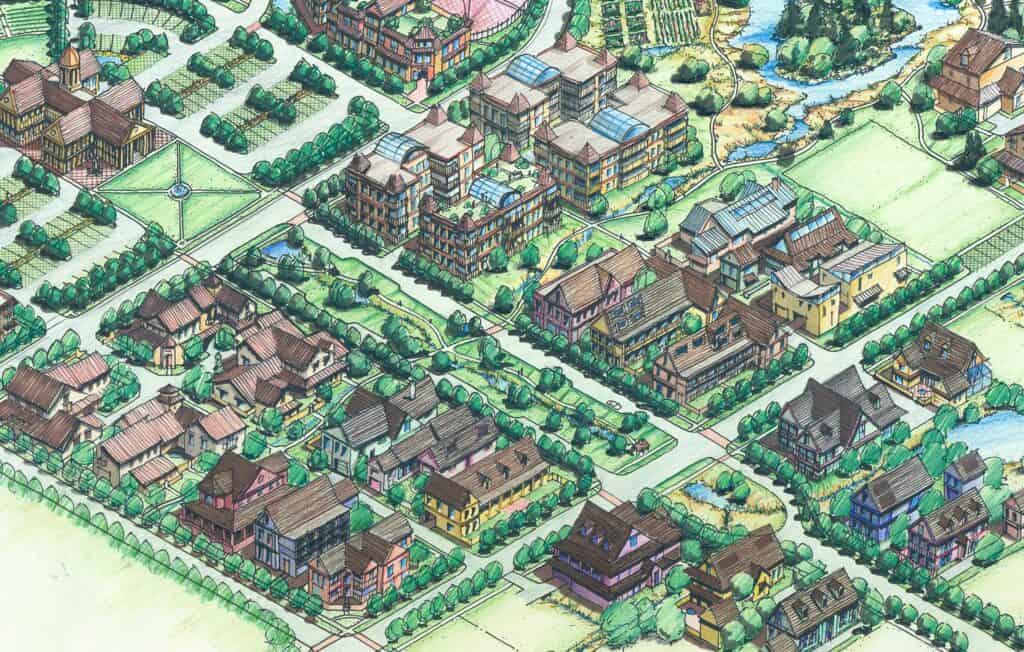
Smarter Land Use and Sustainable Site Planning
Efficient land use lies at the heart of livable, connected communities. Instead of spreading development across large expansive areas, thoughtful planning emphasizes clustering, minimizing infrastructure, shared space, and a better return on land investment.
Smaller or varied lot sizes can accommodate different housing types and price points, while clustering homes helps preserve and maximize green space for parks and trails. Mixed-use planning brings residential, commercial, and civic life closer together—reducing car dependency and encouraging interaction.
By designing for community rather than just construction, we create spaces where people can truly live and thrive, not just reside.
Stormwater Management that Works with Nature
Traditional underground stormwater systems often remove water rapidly—but at great cost and without environmental benefit. HR Green helps clients integrate natural systems that manage water where it falls.
Sustainable stormwater strategies include:
- Bio-swales, bio-basins, and rain gardens that slow and cleanse runoff using native vegetation.
- Permeable pavements and cut curbs that reduce impervious surface and support infiltration.
- Rainwater harvesting and on-site wastewater treatment where appropriate, improving resource efficiency and resilience.
These systems recharge groundwater, support biodiversity, and often enhance community aesthetics—especially when placed within parks, medians, or trail corridors.
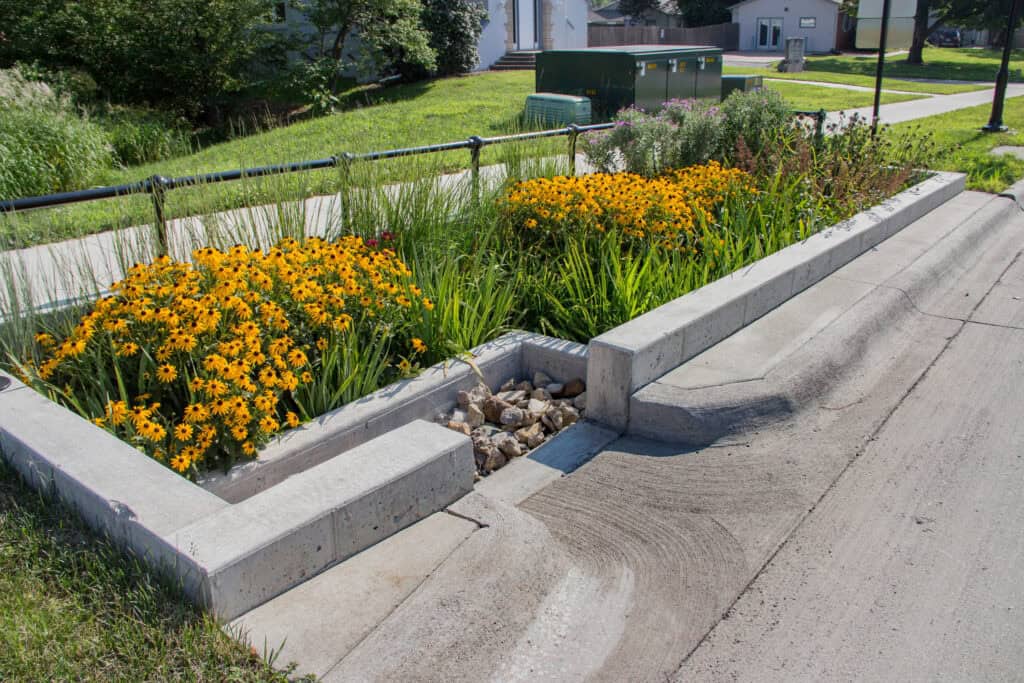
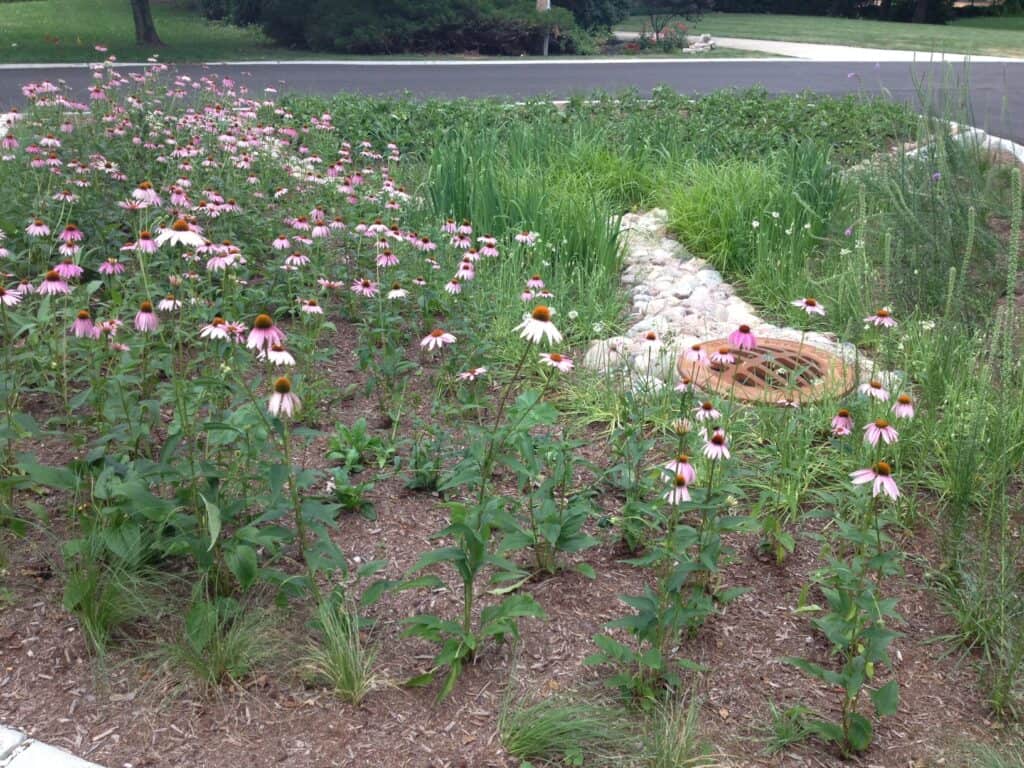
Designing for Connectivity and Community
In sustainable communities, mobility and connectivity are just as important as aesthetics and infrastructure. When neighborhoods are walkable and well-connected, residents enjoy greater access to services, improved health outcomes, and a stronger sense of belonging.
HR Green promotes pedestrian-first design through:
- Sidewalks, trails, and cross-block connections that link homes with schools, parks, and shops
- Public green spaces that double as stormwater tools and social hubs
- Green streets with narrower widths, street trees, and traffic calming techniques that enhance safety and sustainability
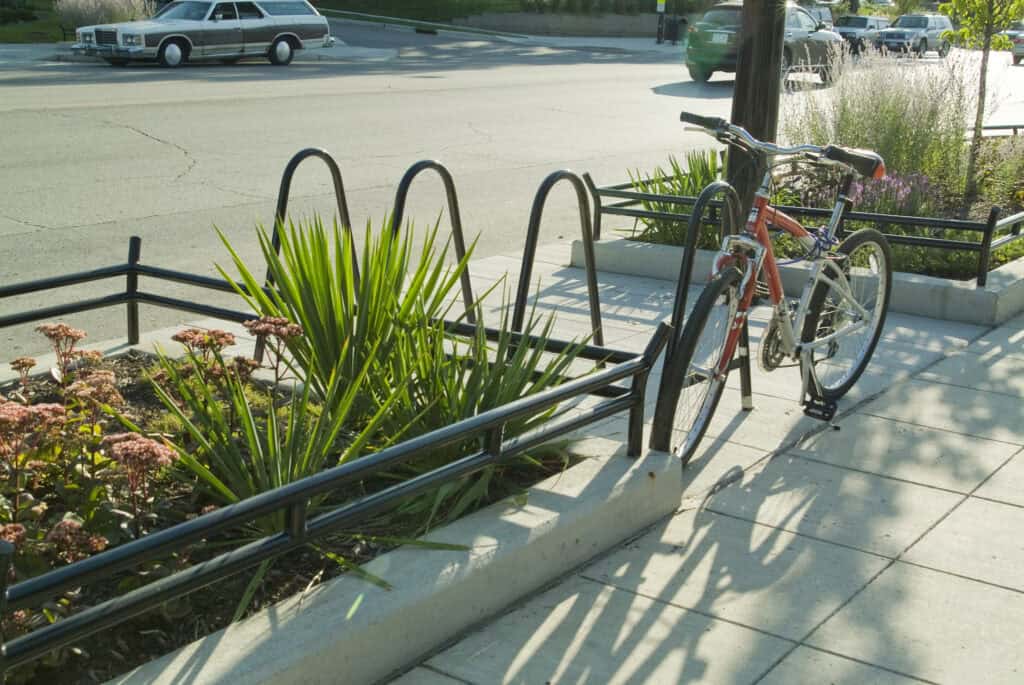
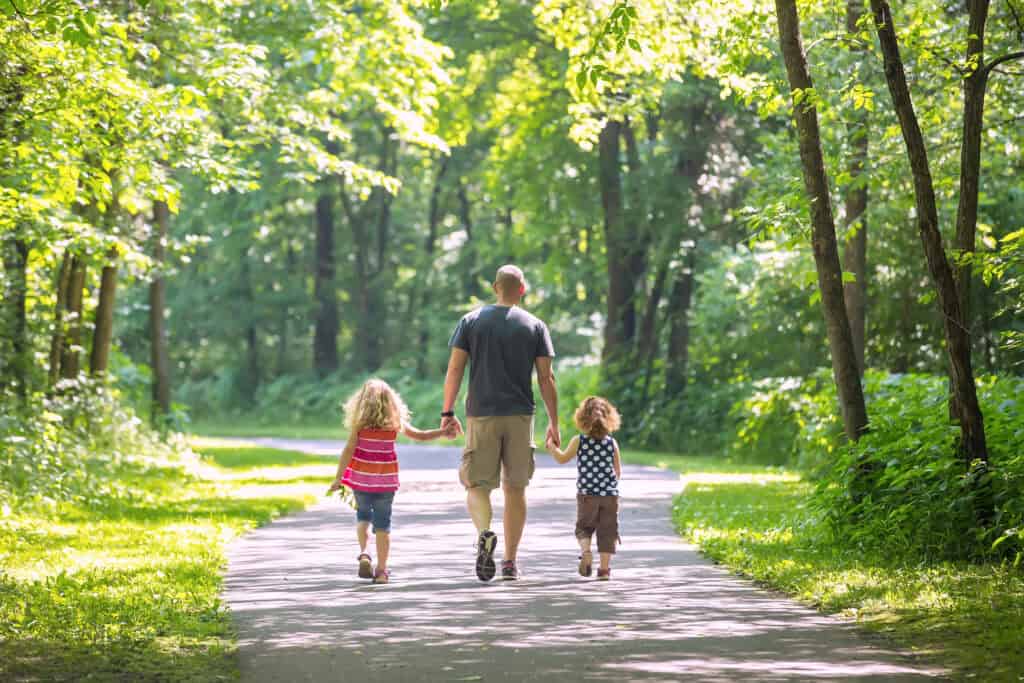
A Holistic Framework for Modern Land Development
HR Green’s work aligns technical proficiency with natural systems and human needs. By embracing the following strategies, communities are better prepared for both the known and the unknown:
- Design with the land—preserve topography and native ecosystems
- Minimize unnecessary infrastructure to reduce cost and carbon impact
- Implement long-term maintenance planning to sustain function and value
- Educate stakeholders—including contractors, developers, and residents—on sustainable practices
Success Stories: HR Green in Action
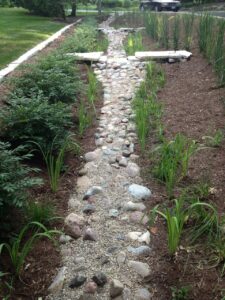
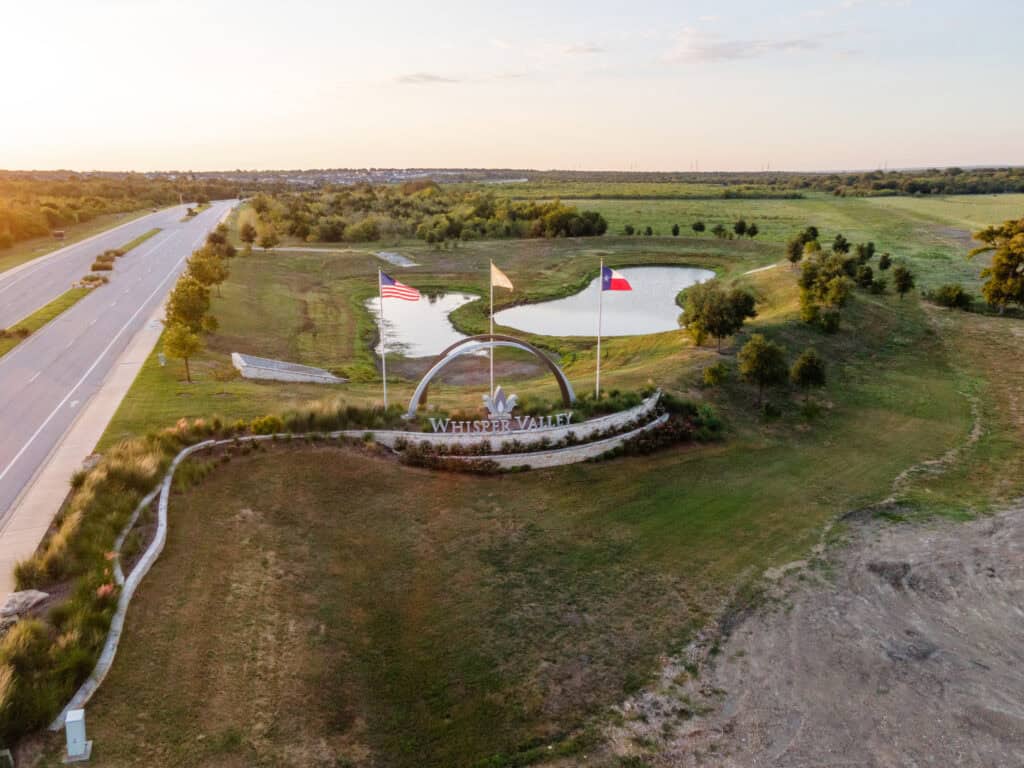
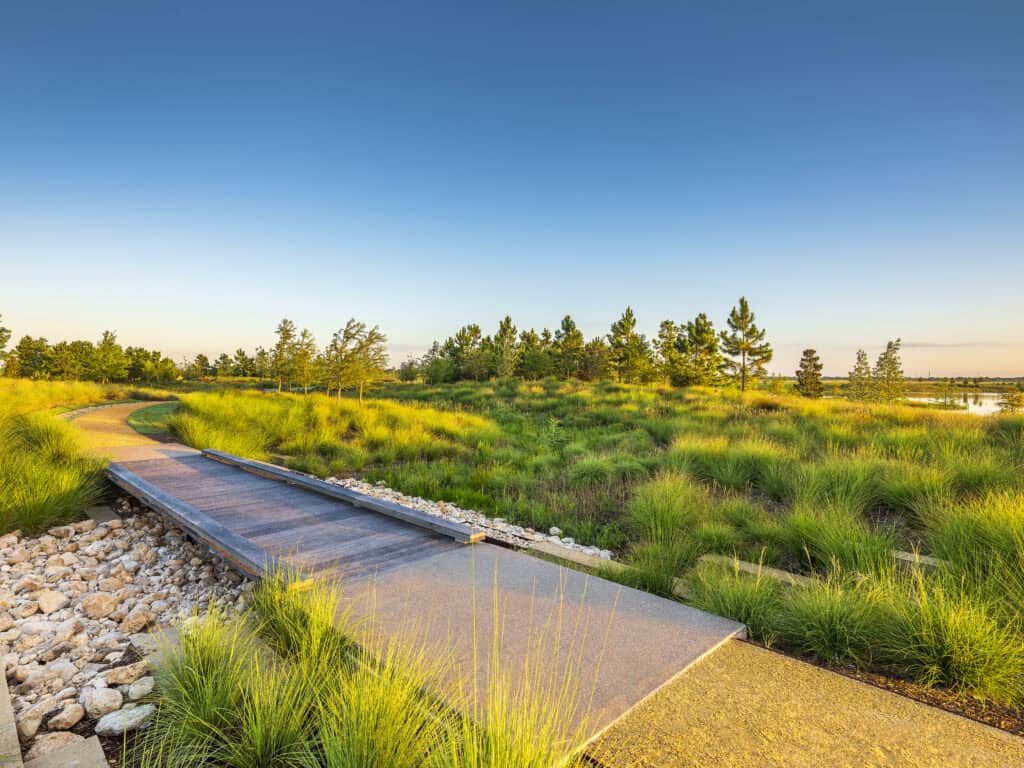
The Woodlands Neighborhood – Hinsdale, Illinois
HR Green’s work on The Woodlands Neighborhood addressed severe stormwater issues using climate-resilient solutions like permeable pavers, bio-swales, and rain gardens. By integrating these techniques with underground storage, HR Green reduced peak runoff by nearly 50%, providing long-term flood prevention while preserving the neighborhood’s mature trees and green spaces.
Whisper Valley Residential Development – Austin, Texas
At Whisper Valley, a 2,063-acre master-planned community, HR Green supported the development of a geothermal energy network across the entire community. This innovative energy system reduces energy consumption by 65%, demonstrating how sustainable technologies like geothermal energy can be integrated on a large scale to lower environmental impact while meeting the growing housing demand in fast-developing regions.
Bridgeland Creek Parkway – Houston, Texas
HR Green’s design of Bridgeland Creek Parkway in the Prairieland Village integrates green infrastructure and low-impact design to manage stormwater while creating wildlife-friendly habitats. The use of bioswales and bio-retention basins supports stormwater infiltration and water cleansing, while the thoroughfare serves as a habitat for birds and butterflies, blending natural ecosystems with urban infrastructure.
Let’s Build a Green, Sustainable, and Resilient Future Together
Sustainable land development isn’t just a trend—it’s the foundation for healthier, more resilient communities. Whether your priority is stormwater, energy use, or walkability, HR Green is here to help you plan for long-term success. Contact us today to discuss your green infrastructure and development goals.



